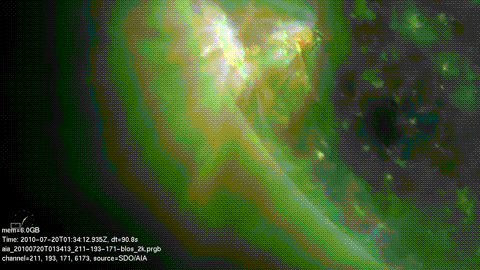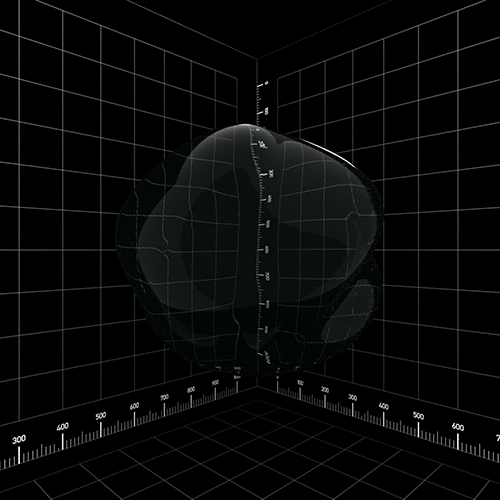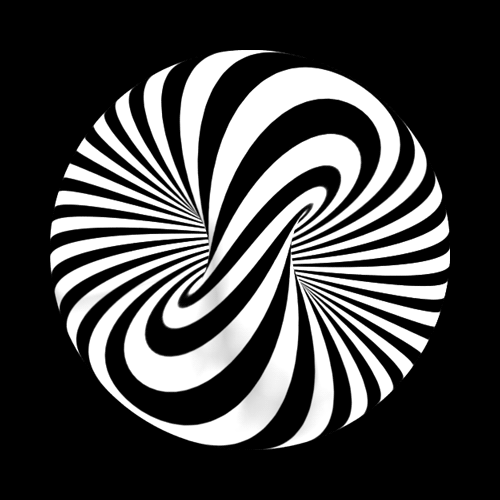I like this art
Contemporary Art Blog
Wednesday, January 12, 2011
Friday, August 13, 2010
New Site Live!

http://ilikethisart.blogspot.com has officially moved to a new URL/server/design @ http://ilikethisart.net. All new posts will happen there from now on, and all content has been imported to the new site, so there is no need to switch back and forth. Also, the images are bigger and verticals no longer have to be compressed.
For feed readers, the new feed is here. Come check it out!
Monday, August 2, 2010
Hellicar and Lewis



Work from Mirror Mirror.
"We were invited by the Victoria and Albert Museum’s Learning & Interpretation department to create an installation to engage people of all ages over their Baroque weekend, in support of the recent Baroque exhibition. Using the departments existing range of iMacs, we made an installation that would create a spontaneous mask from various Baroque elements from the exhibition. Users were able to take grabs of their creations, and share them with other visitors. Created using openFrameworks, the software was Open Sourced (Mac OS X 10.5 or above, iSight camera or other required) after the event, allowing for people all over the world to create their own masks. Indeed, the installation is the first piece of open software to be released by the V&A, in conjunction with Hellicar & Lewis. Source code listing available here." - Hellicar and Lewis
Sunday, August 1, 2010
Aslak Vibæk and Peter Døssing




Aslak Vibæk and Peter Døssing (AVPD)
Work from their oeuvre.
"Only by the use of semi-transparent PVC foil mounted in several layers in different combinations this series of works examines the perception of how the light penetrates the layered transparency film creating vibrant light differentiated surfaces/tones
The visibility of the works depends on the light angle which makes the perception of each work physical because the viewer has to move the body to find the right angle to make the work appear.
____________________________________
"Pladsen" is an exhibition space situated in the basement of Charlottenborg in Copenhagen. The entire building is listed and to solve the situation of exhibiting works without damaging the walls of the architecture the responsible exhibition group of "Pladsen" decided to erect a detached floor-to-ceiling wall construction, which resulted in a white uniform room.
Flip deals with the situation of this temporary uniform covering of the original historical walls of the room by simply disassembling, flipping and reassembling the five sections of the wall construction. This way creating a new order of the room by exposing the backside of the wall construction."- AVPD
Saturday, July 31, 2010
Marissa Textor





Work from her oeuvre.
"Can you talk a little bit about your content, you seem drawn toward epic nature, Why do you draw what you do and how do you decide what you want to draw next?
It's exciting to me. In an over-stimulated world this is the stuff the holds my attention and surprises me. I'm not sure if it is because I grew up in Southern California and I'm not used to dramatic weather but there is something very shocking but at the same time very beautiful about events like a thunderstorm. My mom and I where in Santa Fe one time when a huge thunderstorm broke out, we were absolutely captivated and watched it for hours like it was TV. As long as it has that ability, I'll be drawn to it. I am also interested in subject matter that is not tied to a specific time period and that can be relevant outside of the context of my personal experience. These naturally occurring events are much bigger than you and I and are something we have no control over. I think that is a nice reminder of our time and place here and understanding why things happen the way they do in the natural world can answer a lot of life's big questions. When I'm deciding what to draw for the larger pieces it is usually based on a current fascination that I've spent a lot of time researching. I pull a lot of photos and create folders for each subject and then it becomes a matter of piecing different elements together to create the image." - interview via Fecal Face
via field notes.
Friday, July 30, 2010
Taryn Simon





Work from Contraband.
"Passengers, airliners, workers, baggage, cargo, taxis and trains flow ceaselessly through Kennedy International Airport.
Taryn Simon recorded another ceaseless flow — one the public rarely sees: contraband detained and seized from international flights.
Ms. Simon, 35, a Guggenheim fellow who lives in New York, spent five days and nights at Kennedy, barely sleeping. Her daily rhythms were driven by the relentless arrival of newly impounded goods.
After setting up makeshift studios at inspection sites in Terminal 4, Ms. Simon photographed 1,075 items that were taken from passengers and express mail. They ranged from banal bags of nuts to a falcon corpse from Indonesia in a package that declared it to be “home décor.”
“This is a look at an attempt to control what is considered threatening to economies, to personal safety and to a nation,” Ms. Simon said.
She has meticulously cataloged every item alphabetically for a 500-page book, “Contraband,” that Steidl will publish this fall. The New York Times Magazine is featuring an excerpt of 40 images.
Viewed collectively, her simple, uniform images offer a fascinating portrait of the world through objects from “alcohol” to “zolpidem” (Ambien).
Some items turn up again and again: sexual stimulants, counterfeit luxury goods and drugs. “I think it’s a depressing reflection of what everyone is chasing — all these forms of escape that create quite a flat representation of human desire in all corners of the world,” Ms. Simon said.
Fake Louis Vuitton handbags, steroids from Pakistan and counterfeit boxes of Viagra from China (labeled “USA American Visagra”) are just a few of the images that serve as a time capsule of contemporary desire. Not everything is so predictable, however. Among the more surprising objects were two dead guinea pigs. They were taken from a passenger flying in from Ecuador, where the animal is considered a delicacy.
”You have people arriving from different cultures with the normal parts of their everyday life, and then these suddenly take on a wild identity under U.S. Customs,” Ms. Simon said.
The idea for the project emerged from a 2006 session photographing seized food in the same terminal for “The American Index of the Hidden and Unfamiliar.” In this book, Ms. Simon made the inaccessible accessible, from C.I.A. headquarters to the den of hibernating black bears.
After negotiating for four months with U.S. Customs and Border Protection, Ms. Simon received permission to photograph all newly arriving contraband from Nov. 16 to Nov. 20, 2009. She used a large-format camera and a neutral backdrop.
“I wanted the shoot to be somewhat of a performance piece, where my photographs were replicating the actual flow of goods during a very fixed period of time,” she said.
The process was exhausting. “There’s video footage of me at the end of the shoot, being woken up by someone to press the shutter,” Ms. Simon said. “I was literally falling off my seat.”" - via The New York Times.
Thursday, July 29, 2010
Teo Ormond-Skeaping




Work from In the Fulcrum of Our Dreams.
"In Ormond-Skeaping's multi-layered canvas the more bewildering aspects of dreamscape are invoked: sensations of symbolic import paired with faces that may have no relevance in daily life but in dream logic summon up powerful archetypal associations, creating wave of skin-prickling wave of weird emotional resonance. Is the figure below a harrowing relation? A stranger in decline? Someone with menacing and supernatural powers? A reflection of super ego? Untitled, from the series In the Fulcrum of Our Dreams by Teo Ormond-Skeaping The open-ended, free-association and stream-of-consciousness that runs thickly throughout this work brings to my mind the work of Bill Viola, who works masterfully at themes which combine spirit, rites of passage, Jungian psychology and the uncomfortable, seemingly unending spaces of dream life. While it may seem initially intimidating to learn the language of a new medium and/or incorporate into an existing practice the threads of an entirely new one (or two or three), artists that are unafraid of the learning curve and forgiving of self-created messes and mistakes are eventually rewarded with a much larger tool chest and language set by which to communicate their visions." - Stacy Oborn for Hey Hot Shot!.
Wednesday, July 28, 2010
Jessica Labatte





Work from her oeuvre.
"My photographs are formalist explorations of everyday objects and materials that engage the subjectivity and experiential qualities of matter. Juxtapositions of content, form, and color imbue dynamism into the still life tradition in their ability to place a still object into a state of becoming. In this state of action, the images have an autopoietic, or self-generating visual rhythm established within the composition’s architecture. Perspectival manipulations created with the large format camera shift and tilt the picture plane, creating a confusing sense of depth and scale. These images play with the illusionistic tendencies of photography and its potential to simultaneously reveal truths and spin falsehoods. By creating a tension between accurate representations of form and deceiving attempts at flatness, my photographs lead viewers through a strange questioning of what it is we are actually seeing and how it was created. These mind- bending forms result in pleasurable questioning that provokes an active looking. Looking back to Dutch still life paintings, my photographs present objects for contemplation on the social, political and technics of the time. These objects are from the street as much as from the studio–representations of the discarded and the treasured. However these images do not engage in the creation of specific symbolisms, as the objects in the pictures never stand for something else. They are content to be themselves, formally captivating us through a chaos of sensations. Fragments act as catalysts allowing a wide range of references to float in and out of the viewer’s consciousness, as they incite provoking questions about how to reconcile our subjectivity with the objects surrounding us. And while the images foreground human presence as much as they play archaeologist for contemporary consumer culture, they also engage photography’s potential as the link between physical and immaterial worlds." - Jessica Labatte via Humble Arts Foundation.
Tuesday, July 27, 2010
Richard Mosse






Work from Quick.
"...His work from Eastern Congo, a part of the world largely overlooked by mainstream media, is no exception. Mosse used Aerochrome, an obsolete technology, to create an alternative image of the complex social and political dynamics of the country. The film, designed in connection with the United States military during the Cold War, reveals a spectrum of light beyond what the human eye can perceive. He aims “to shock the viewer with this surprising bubblegum palette, and provoke questions about how we tend to see, and don’t see, this conflict.”
Monday, July 26, 2010
Yao Lu





Work from New Landscapes.
"Rarely exhibited in the West, Chinese artist Yao Lu (b. 1967) documents his changing country in atmospheric works that look to the future through the lens of the past. In his first show in the U.S., Yao presented 16 photographs, most circular or rounded windowlike compositions floating on a white ground, 47¼ inches square, with two horizontals measuring 6 and 10 feet across. The neutral backgrounds and compressed spaces suggest traditional Chinese landscape paintings; the works even bear the red signature stamps and collection seals known as chop marks. But these mist-shrouded scenes (ranging from 2006 to ’08) are digitally composed montages of photographs taken by Yao of China’s ubiquitous construction sites and trash heaps.
In these cleverly disguised scenes, Yao subtly critiques China’s willingness to sacrifice its history and despoil the environment in its breathtaking sprint to modernization. Deceptively pastoral scenes of rivers, lakes and mountains blanketed with flora or dusted with snow are, upon closer inspection, ravaged landscapes awaiting development. Lush-seeming hillsides are actually green mesh-covered mountains of debris. A flowing river is revealed to be a road wending around mounds of rubbish, and rocky outcrops are broken chunks of concrete. Some scenes are nonspecific, while the titles of others provide locales—fishing boats near Mount Yu, a house on Mount Fuchun, a spring picnic beside Lake Dongting—all soon to be lost, presumably, to sprawling construction. The lone tree, pagoda or house illustrates not an ideal but the lone holdout still standing in the revision of a national narrative.
Yao’s work is akin to that of Masami Teraoka, Yun-Fei Ji, Shahzia Sikander or any number of artists who recycle traditional art forms to suit contemporary themes. With tiny human figures visible in some works, Yao’s pictures also touch on the tradition of the sublime, here with humanity overwhelmed not by nature but by the forces of commerce and “progress.” While many of his compatriots found expression in physical feats or Western modes of representation, Yao’s message seems more poignant and mournful than defiant. His transformation of environmental depredation into nostalgic renderings of natural beauty raises the question of whether the new China, like Yao’s fabricated scenes, is built on falsehood." - Stephanie Cash for Art in America.
Sunday, July 25, 2010
David Ope





Work from dvdp.
One of the most reliably mesmerizing sites I visit these days is the op-art inspired "visual Chinatown" of Hungarian artist David Ope. While generally Ope presents animated gif works that employ illusory tricks that add dimensions of both depth and time to the screen based images, he occasionally branches out and creates some fantastic, and hilarious, gifs that you wouldn't expect. While the experience of stumbling into the vortex of a wormhole or watching a sphere eat itself stretches our understandings of the third and fourth dimensions, these more metaphysical works are perfectly balanced with the more indulgent and accessible works interject themselves into his site.
Saturday, July 24, 2010
Paul Sepuya and Timothy Hull




Paul Sepuya and Timothy Hull
Work from The Accidental Egyptian and Occidental Arrangements.
"The book The Accidental Egyptian and Occidental Arrangements features over 25 photograph-based collages of xerox imagery on cut paper. Culling from our personal image collection, the collages reflect not only our personal aesthetics and sensibilities but new compositions and relationships. This project is also furthering our respective use of xerox collage and book/zine format. The series is very much about arrangements, with repeating deconstructed portraiture and images of Coastal Maine, Rainforests and Ruins all taking cues from each other to suggest various relationships of cultural and humanistic qualities. We were inspired to make this book a reality after being asked to produce a piece together for TOKION's February 2010 "collaboration" issue." - Sepuya and Hull
via i heart photograph
Friday, July 23, 2010
Affiliati Peducci / Savini





Work from their oeuvre. Their exhibition is on until the end of the month at Galleria Rubin in Milan.
I find it appropriate to include the press release from their current exhibition, translated via google translate as it mirrors translations of classical sculptures in their works. Ironically, many of these busts recall the ephemeral and incorporeal avatars of second life, among other transient and temporary media.
"Rubin presents the first solo artist Milan Affiliates corbels / Savini. Among young contemporary sculptors and 'widespread use of poor materials or recycled. Corbels and Savini, on the contrary will be challenged with a noble and dignified as marble demonstrating technical knowledge and experience by virtuosos.
In relation to this choice on their path and 'exemplary graduates at the Academy of Fine Arts in Carrara, where is' done their meeting and is' born artistic partnership, they could increase their production by working on important projects abroad completed in part in their great studio in Carrara and partly to the destination.
Their research work comes from the extraordinary familiarity with the material condition and irony with the forms of sculptural tradition that is normally experienced. Classical busts, holy figures or purely ornamental, portraits.
This iconography, from the great masterpieces until the items' Run, is taken up and reworked with insight or humor to become a gallery of amazing improvisations on well-known themes: the Farnese Hercules in polystyrene, a pair of cherubs garden that seem wood burned up to more 'daring distortions arising from handling of the tires with which they are traced. Recently, we have sent more decisively in this direction by creating portraits that combine and integrate different parts of sculptures.
It 's a job that many evidence from contemporary artists, among which there is not only inappropriate, the phenomenon of' materials and forms, but also a certain satisfaction in hybridization and grotesque. However corbels and Savini demonstrate against classical iconography, a love and familiarity that prevents any cloying degeneration and suggests a free hand but respectful coexistence." - Galleria Rubin via Google Translate